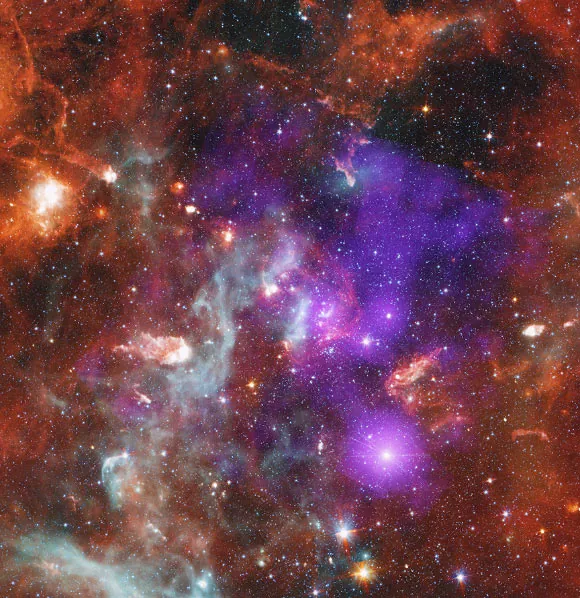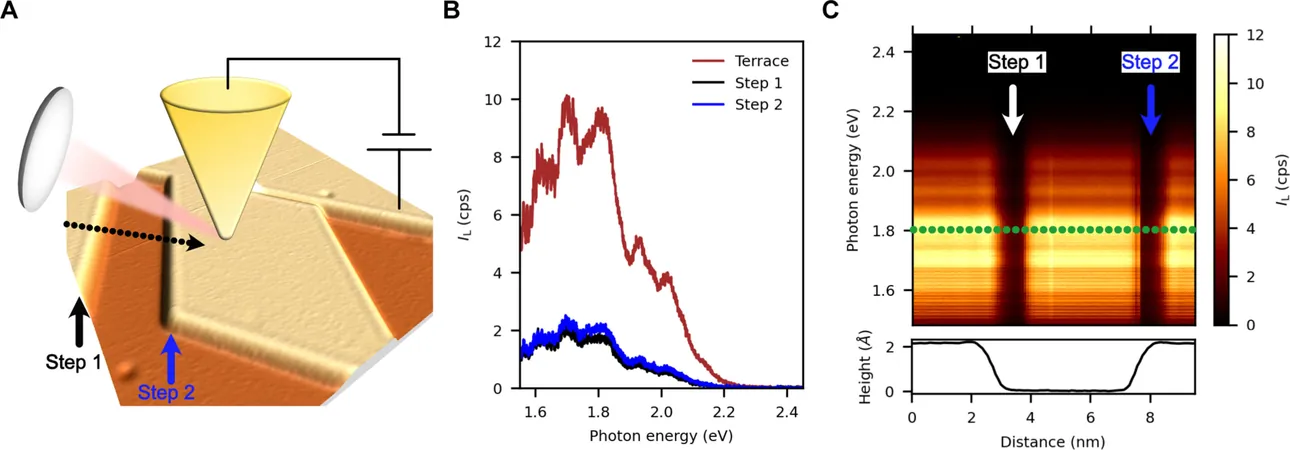
Shocking Discovery: How X-Ray and UV Radiation Are Pulverizing Protoplanetary Disks in Cygnus OB2!
2024-10-30
Author: Ming
Groundbreaking Study Conducted in Cygnus OB2
In a groundbreaking study, astronomers have uncovered the alarming effects of X-ray and ultraviolet emissions on protoplanetary disks surrounding stars in Cygnus OB2, the nearest massive young stellar association to our Sun, located approximately 4,600 light-years away. This celestial region is teeming with hundreds of massive stars alongside thousands of smaller ones, making it a hotbed for stellar formation.
Research Team and Methodology
Dr. Mario Giuseppe Guarcello from the National Institute for Astrophysics and Dr. Juan Facundo Albacete-Colombo from the University of Rio Negro led a research team utilizing NASA’s Chandra X-ray Observatory. Their ambitious project involved mapping the diffuse X-ray glow permeating this stellar neighborhood while cataloging the young stars present in the association. By integrating this X-ray data with optical and infrared observations, they produced the most thorough census of young stars ever compiled in Cygnus OB2.
Impact of High-Energy Radiation on Protoplanetary Disks
The researchers made a crucial revelation: in such densely packed stellar environments, high-energy radiation from stars and potential planets can unleash chaos on protoplanetary disks. “X-rays and intense ultraviolet light can have a devastating impact on planetary disks and systems in the process of forming,” the astronomers explained, alluding to the cataclysmic effects of environmental factors on planetary development.
The Process of Photoevaporation
Protoplanetary disks, which are essential for planet formation, face a natural fade over millions of years. A significant amount of material from these disks spirals into their parent stars, while some of the material is vaporized by the immense heat generated by X-ray and ultraviolet radiation, a phenomenon called photoevaporation. Normally, this process takes between 5 to 10 million years for average stars, but the presence of nearby massive stars dramatically accelerates this timeline.
Alarming Rates of Disk Disappearance
The study revealed that disks surrounding stars vanish at alarming rates when they are in proximity to massive stars emitting high-energy radiation. In densely populated regions of Cygnus OB2, where stars are clustered closely and high-energy emissions are rampant, the fraction of young stars possessing intact disks plummets from about 40% to a mere 18%. Astonishingly, the worst conditions for developing planetary systems exist within a striking distance of about 1.6 light-years from the most massive stars in the cluster.
Understanding Diffuse X-Ray Emissions
Moreover, the same research team delved into the nature of the diffuse X-ray emissions in Cygnus OB2, identifying that the more intense emissions result from turbulent gas winds colliding, heating the gas enough to generate X-rays. Meanwhile, the less energetic emissions originate from gas intermingling between the cluster and its surroundings.
Conclusion and Future Implications
This research not only enhances our understanding of the challenges facing star systems in the fiery embrace of massive stars but also underscores the unique risks posed to fledgling planetary systems in Cygnus OB2. The revelations could reshape the scientific narrative surrounding star formation and planetary development in the cosmos. Keep an eye on this fascinating research as it propels us deeper into the mysteries of our universe!



 Brasil (PT)
Brasil (PT)
 Canada (EN)
Canada (EN)
 Chile (ES)
Chile (ES)
 España (ES)
España (ES)
 France (FR)
France (FR)
 Hong Kong (EN)
Hong Kong (EN)
 Italia (IT)
Italia (IT)
 日本 (JA)
日本 (JA)
 Magyarország (HU)
Magyarország (HU)
 Norge (NO)
Norge (NO)
 Polska (PL)
Polska (PL)
 Schweiz (DE)
Schweiz (DE)
 Singapore (EN)
Singapore (EN)
 Sverige (SV)
Sverige (SV)
 Suomi (FI)
Suomi (FI)
 Türkiye (TR)
Türkiye (TR)